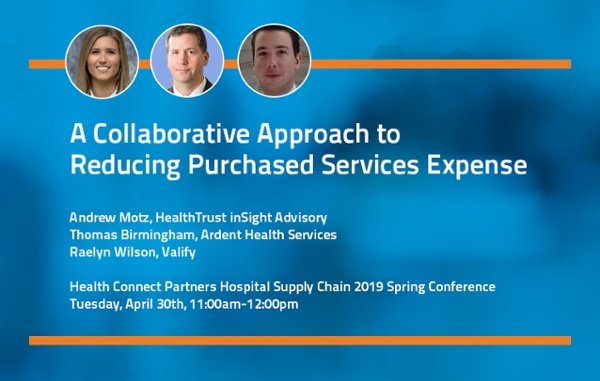In addition to sponsoring the 2019 Spring Health Connect Partners Hospital Supply Chain Conference, Valify was chosen to co-present an educational session along with HealthTrust inSight Advisory and Ardent Health System. Raelyn Wilson, Valify’s Director of Client Success, along with Tom Birmingham, Ardent Health Services Director of Purchased Services and Capital Equipment, and Andy Motz, SVP HealthTrust inSight Advisory, will present at HCP on Tuesday, April 30 at 11:00 am. Continue reading






